Filter by

Dengue Virus (denv) Clinical Isolates Genotyping And Reference Strain In-vitr…
Dengue virus (DENV) poses a global health threat due to the high prevalence, with varying degrees of severity which can escalate to mortality. The disease burden is increased by the genetic diversity, resulting in serotypes and genotypes with different replication rate and clinical severity. This molecular diversity, especially prevalent in endemic regions like Indonesia, underlies the importan…
- Edition
- -
- ISBN/ISSN
- -
- Collation
- -
- Series Title
- -
- Call Number
- EP BM-035

Estimating species trees : practical and theoretical aspects
Recent computational and modeling advances have produced methods for estimating species trees directly, avoiding the problems and limitations of the traditional phylogenetic paradigm where an estimated gene tree is equated with the history of species divergence. The overarching goal of the volume is to increase the visibility and use of these new methods by the entire phylogenetic community by …
- Edition
- -
- ISBN/ISSN
- 9780470526859
- Collation
- xii, 215 p. : ill. : ind. ; 26 cm.
- Series Title
- -
- Call Number
- 582.16 Est
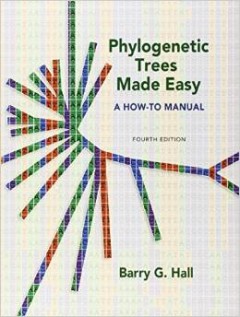
Phylogenetic trees made easy : a how-to manual
Reflecting new software updates, and with more advanced topics, the Fourth Edition helps the student create phylogenetic trees from protein or nucleic acid sequence data. The reader is taken step-by-step from identifying the sequences required, to drawing the tree for presentation to an intended audience.
- Edition
- 4th ed.
- ISBN/ISSN
- 97808789360699
- Collation
- xiv, 282 p. : ill. : ind. ; 24 cm.
- Series Title
- -
- Call Number
- 578.012 Hal p
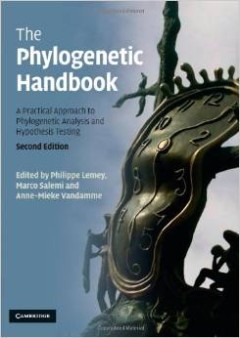
The phylogenetic handbook : a practical approach to phylogenetic analysis and…
The Phylogenetic Handbook is a broad, hands on guide to theory and practice of nucleotide and protein phylogenetic analysis. This second edition includes six new chapters, covering topics such as Bayesian inference, tree topology testing and the impact of recombination on phylogenies, as well as a detailed section on molecular adaptation. The book has a stronger focus on hypothesis testing than…
- Edition
- 2nd
- ISBN/ISSN
- 9780521730716
- Collation
- xxvi, 723 p. : ill. : ind. ; 26 cm.
- Series Title
- -
- Call Number
- 578.012 Phy

Phylogenetics : theory and practice of phylogenetic systematics
The long-awaited revision of the industry standard on phylogenetics Since the publication of the first edition of this landmark volume more than twenty-five years ago, phylogenetic systematics has taken its place as the dominant paradigm of systematic biology. It has profoundly influenced the way scientists study evolution, and has seen many theoretical and technical advances as the field has …
- Edition
- 2nd
- ISBN/ISSN
- 9780470905968
- Collation
- xvi, 406 p. : ill. : ind. ; 26 cm.
- Series Title
- -
- Call Number
- 578.012 Wil p

Modern phylogenetic comparative methods and their application in evolutionary…
Phylogenetic comparative approaches are powerful analytical tools for making evolutionary inferences from interspecific data and phylogenies. The phylogenetic toolkit available to evolutionary biologists is currently growing at an incredible speed, but most methodological papers are published in the specialized statistical literature and many are incomprehensible for the user community. This te…
- Edition
- -
- ISBN/ISSN
- 9783662435496
- Collation
- 552 p. : ill. : ind. ; 24 cm
- Series Title
- -
- Call Number
- 575 Mod
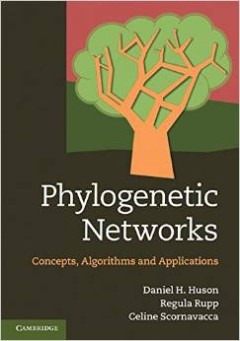
Phylogenetic networks : concepts, algorithms and applications
The evolutionary history of species is traditionally represented using a rooted phylogenetic tree. However, when reticulate events such as hybridization, horizontal gene transfer or recombination are believed to be involved, phylogenetic networks that can accommodate non-treelike evolution have an important role to play. This book provides the first interdisciplinary overview of phylogenetic ne…
- Edition
- -
- ISBN/ISSN
- 9780521755962
- Collation
- xii, 362 p. : ill. : ind. ; 25 cm.
- Series Title
- -
- Call Number
- 578.012 Hus p
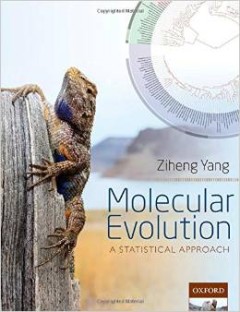
Molecular evolution : a statistical approach
Studies of evolution at the molecular level have experienced phenomenal growth in the last few decades, due to rapid accumulation of genetic sequence data, improved computer hardware and software, and the development of sophisticated analytical methods. The flood of genomic data has generated an acute need for powerful statistical methods and efficient computational algorithms to enable their e…
- Edition
- 1st edition
- ISBN/ISSN
- 9780199602612
- Collation
- xv, 492 p. : ill. : ind. ; 26 cm
- Series Title
- -
- Call Number
- 572.838 Zih m
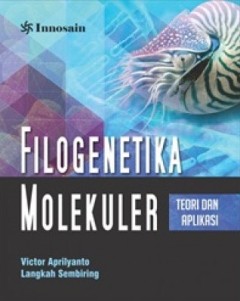
Filogenetika molekuler: teori dan aplikasi
Filogenetika molekuler merupakan sebuah ilmu yang lahir dari pesatnya perkembangan bidang biologi molekuler, khususnya teknologi pengurutan DNA dan protein. Berbagai upaya dikembangkan untuk menggali informasi yang terkandung di dalam urutan biomolekul tersebut, termasuk di dalamnya adalah informasi mengenai hubungan kekerabatan evolusioner antar organisme dengan leluhurnya. Filogenetika Moleku…
- Edition
- -
- ISBN/ISSN
- 9786027299962
- Collation
- xi, 212 p. : ill. : ind. ; 26 cm.
- Series Title
- -
- Call Number
- 571.29 Apr f
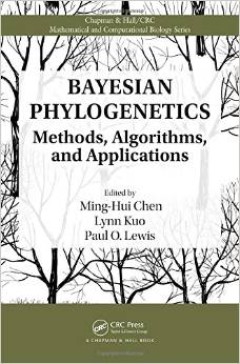
Bayesian phylogenetics : methods, algorithms, and applications
Offering a rich diversity of models, Bayesian phylogenetics allows evolutionary biologists, systematists, ecologists, and epidemiologists to obtain answers to very detailed phylogenetic questions. Suitable for graduate-level researchers in statistics and biology, Bayesian Phylogenetics: Methods, Algorithms, and Applications presents a snapshot of current trends in Bayesian phylogenetic research…
- Edition
- -
- ISBN/ISSN
- 9781466500792
- Collation
- xxx, 365 p. : ill. : ind. ; 24 cm.
- Series Title
- -
- Call Number
- 578.012 Bay

Animal evolution : interrelationships of the living phyla
Animal Evolution provides a comprehensive analysis of the evolutionary interrelationships and myriad diversity of the Animal Kingdom. It reviews the classical, morphological information from structure and embryology, as well as the new data gained from studies using immune stainings of nerves and muscles and blastomere markings which makes it possible to follow the fate of single blastomeres al…
- Edition
- 3rd edition
- ISBN/ISSN
- 9780199606030
- Collation
- x, 402 p. : ill. : ind. ; 26 cm.
- Series Title
- -
- Call Number
- 591.38 Nie a
 Computer Science, Information & General Works
Computer Science, Information & General Works  Philosophy & Psychology
Philosophy & Psychology  Religion
Religion  Social Sciences
Social Sciences  Language
Language  Pure Science
Pure Science  Applied Sciences
Applied Sciences  Art & Recreation
Art & Recreation  Literature
Literature  History & Geography
History & Geography